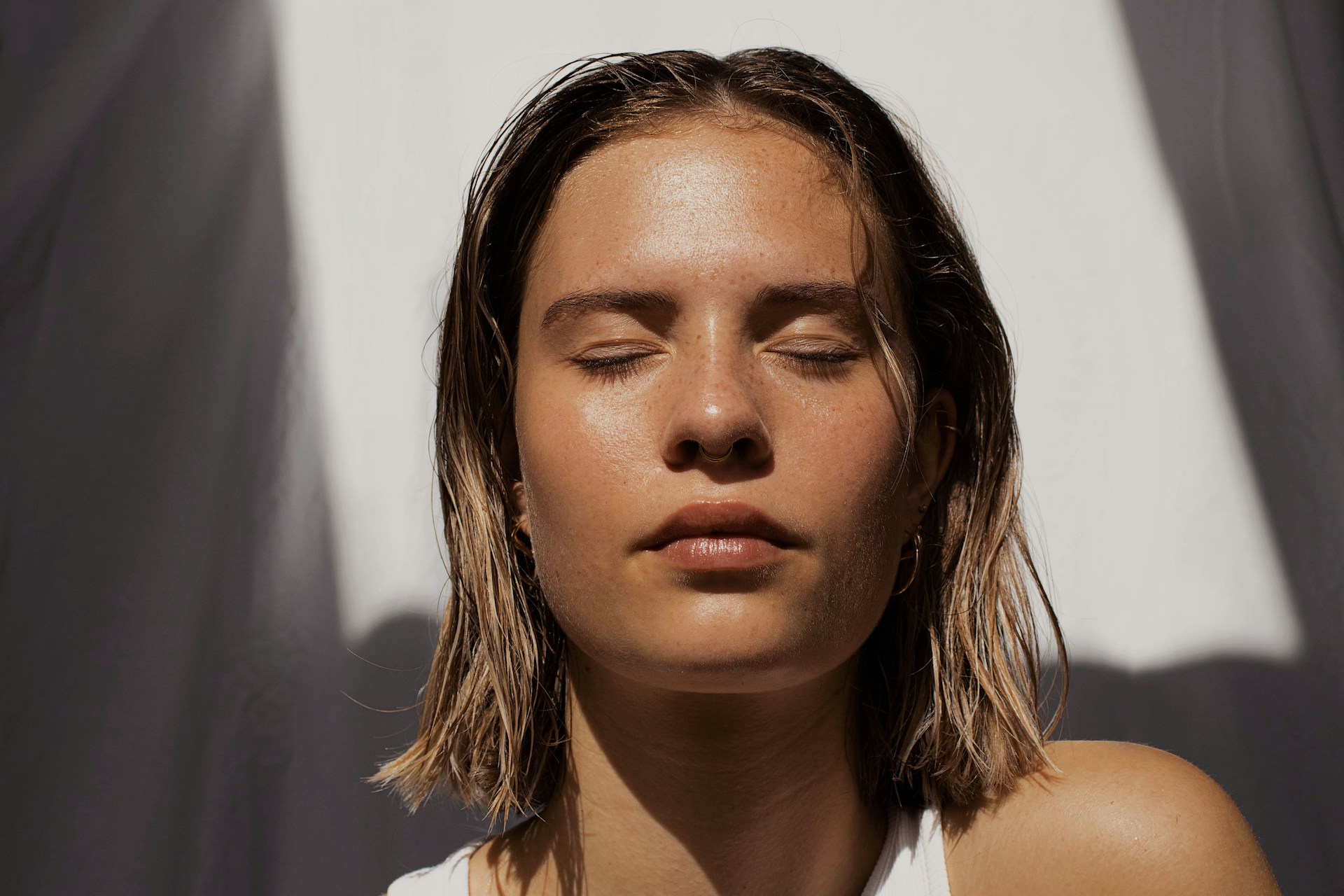Radiant Skin Using Light Therapy
Light affects the ability of our skin cells to age gracefully. Radiant skin depends on well functioning skin cells, which means they need to be good at producing energy and repairing damage. This allows them to be optimal skin cells, producing optimal skin quality.
Your skin is one of the first things someone notices when they see you.
Most skin issues are caused by poorly functioning skin cells.
The key to improving skin quality and reversing skin damage is to allow your skin cells to make more energy.
With more energy, skin cells can produce collagen for rebuilding, make their own water for hydration, and repair damage to reverse aging and increase telomere length in the cell.

How does light help with radiant skin?
Radiant skin comes down to two elements of light: red light and ultraviolet light.
Red light, which also includes infrared, is able to increase cell energy efficiency, energy production, and water production, because it is absorbed by something called CCO in the cell's mitochondria. [7]
This provides hydration to the cell [1] and gives it more energy to repair and produce collagen. [2]
It also boosts production of melatonin in the cell, which acts as an antioxidant to protect the skin. [3]
This melatonin is also used at night while you sleep to clean up your skin cells from the inside, making them work more efficiently. It is a process known as autophagy.

What about ultraviolet light and skin health?
UV light is actually beneficial to skin health if you follow these steps to allow your skin to safely absorb it.
When UV light hits your skin safely by using the steps above, it actually produces a number of beneficial effects.
UV-A light increases collagen levels in the skin. [4]
Your skin also thickens with UV light exposure. [5] Skin thickness reduces with age and is a sign of poor skin health and aging. [6] Ultraviolet light prevents this progression.
It also improves the skin microbiome. [8]
How to use light therapy to improve skin quality
Radiant skin from red light and uv light exposure comes down to a few simple methods:
- Get more sunlight Sunlight is 50% red/infrared light. This red light naturally balances UV light in the middle of the day. By using the proper methods you will be able to use both frequencies safely to greatly improve skin quality.
- Use a red light and/or UV light therapy panel
Using products like an EMR-TEK red light UV light therapy panel (aff) can deliver powerful infrared light with targeted frequencies deep into your body. Infrared light can pass easily through your body and into your deep tissues and organs because of it’s lower frequency. They also have combined UV/red light panels to deliver both together for a safe skin beauty boost.

What to avoid
There are a few key things to avoid if you want to prevent negative impacts to skin beauty and health:
- Indoor living A lack of sunlight is the primary cause of poor skin health because of a lack of the frequencies discussed above
- Too much blue light exposure
As discussed in the UV light absorption guide, blue light will deplete the benefits of red light, and reduce red light’s ability to let you safely absorb UV light. Blue light without red light, just like UV light without red light, will age your skin quickly and reduce skin quality.

Conclusion
Human skin is designed to absorb light from the sun, since it is our only light source on earth.
Even fire from wood or oil is effectively sunlight being released from dead trees or decomposed animals.
We lost hair on our skin in part due to the need to absorb more light from our skin to produce vitamin D.
Red light and ultraviolet light are present outdoors during all hours of daylight, and we evolved outdoors. We naturally use these frequencies to our benefit, and they act as nutrients to optimize our skin health and beauty.
Relevant Products (aff)
EMR-TEK Red Light Therapy Panels
Book: Understanding the Heart by Stephen Hussey
References
- Casteilla L, Devin A, Carriere A, Salin B, Schaeffer J, Rigoulet M. Control of mitochondrial volume by mitochondrial metabolic water. Mitochondrion. 2011 Nov;11(6):862-6. doi: 10.1016/j.mito.2011.06.008. Epub 2011 Jul 1. PMID: 21742062.
- Couturaud V, Le Fur M, Pelletier M, Granotier F. Reverse skin aging signs by red light photobiomodulation. Skin Res Technol. 2023 Jul;29(7):e13391. doi: 10.1111/srt.13391. PMID: 37522497; PMCID: PMC10311288.
- Tan DX, Manchester LC, Qin L, Reiter RJ. Melatonin: A Mitochondrial Targeting Molecule Involving Mitochondrial Protection and Dynamics. Int J Mol Sci. 2016 Dec 16;17(12):2124. doi: 10.3390/ijms17122124. PMID: 27999288; PMCID: PMC5187924.
- Petersen MJ, Hansen C, Craig S. Ultraviolet A irradiation stimulates collagenase production in cultured human fibroblasts. J Invest Dermatol. 1992 Oct;99(4):440-4. doi: 10.1111/1523-1747.ep12616142. PMID: 1402002.
- Pearse AD, Gaskell SA, Marks R. Epidermal changes in human skin following irradiation with either UVB or UVA. J Invest Dermatol. 1987 Jan;88(1):83-7. doi: 10.1111/1523-1747.ep12465094. PMID: 3794392.
- Farage MA, Miller KW, Elsner P, Maibach HI. Characteristics of the Aging Skin. Adv Wound Care (New Rochelle). 2013 Feb;2(1):5-10. doi: 10.1089/wound.2011.0356. PMID: 24527317; PMCID: PMC3840548.
- Hüttemann M, Pecina P, Rainbolt M, Sanderson TH, Kagan VE, Samavati L, Doan JW, Lee I. The multiple functions of cytochrome c and their regulation in life and death decisions of the mammalian cell: From respiration to apoptosis. Mitochondrion. 2011 May;11(3):369-81. doi: 10.1016/j.mito.2011.01.010. Epub 2011 Feb 4. PMID: 21296189; PMCID: PMC3075374.
- https://doi.org/10.1016/j.resmic.2023.104138
What to read next

The Sunlight Cure
by Kendall Toerner
Preventing Aging and Reversing Disease Through the Epigenetic Signals of Nature

